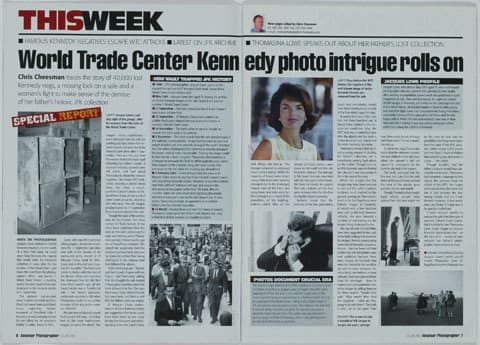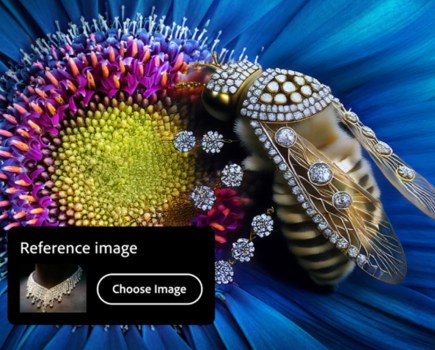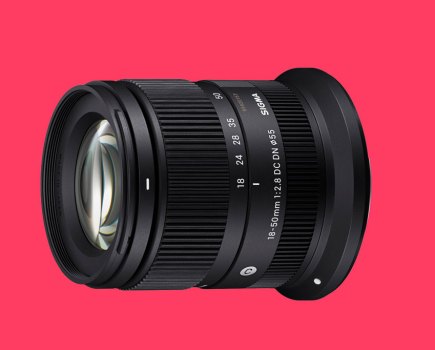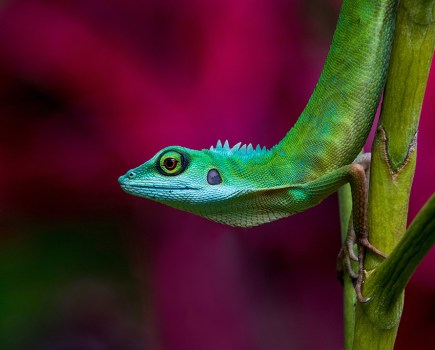The estate of President John F Kennedy?s personal photographer Jacques Lowe has accepted an undisclosed sum from JP Morgan Chase bank over the loss of 40,000 negatives in 9/11.
Jacques Lowe?s treasured archive had been stored in a safe deposit box, housed within the vaults of 5 World Trade Center ? a building next to the twin towers destroyed in the terrorist attacks on New York.
The pictures represented almost all of the photographer?s Kennedy images. Most had never been published, many capturing historic moments of President John F Kennedy at work and play.
JFK was killed by an assassin?s bullets in Dallas on 22 November 1963. This month marks the 44th anniversary of Kennedy’s death.
Lowe, who died in May 2001 aged 71, had opened a safe deposit account at JP Morgan Chase in 1990.
When the photographer?s daughter Thomasina opened the safe in 2002, she discovered that the uninsured negatives had been reduced to a pile of ash and debris.
Following lengthy legal negotiations Thomasina, who lives in London, today told Amateur Photographer (AP) magazine that the Lowe family has reached a ?confidential settlement? with JP Morgan Chase.
Thomasina told us: ‘I am happy that both parties have managed to reach an agreement. It helps to put things to rest.’
She added: ‘It’s been a long process but I am satisfied about the end result – as much as I can be.’
We understand that the bank was not legally obliged to pay compensation for the loss of the safe’s contents but agreed to pay an amount in acknowledgement of the loss.
As we reported in 2002, Thomasina had to wait many months before she was allowed access to the damaged safe following the 9/11 horror.
Under the terms of the financial agreement details of the amount paid by the bank are strictly confidential, according to the Lowe family.
The family say they are unsure how they will go about re-building the archive following the loss of the negatives.
? In 2002, AP broke the news that around 180 images from the archive had escaped 9/11. Thomasina Lowe discovered that 180 negatives, which had been removed for printing, had not been returned to the bank before 11 September 2001. The surviving strips of negatives represented five of her father’s films and most of the pictures had never before been published
Picture (below): This contact sheet was printed from negatives that escaped the 9/11 carnage. They record JFK’s first ever meeting with Soviet leader Nikita Khrushchev Photo credit: The estate of Jacques Lowe

See next week’s issue of Amateur Photographer, in shops from Tuesday 27 November.
AP has been following this story closely since it first broke.
Click on the following pages to read our 2002 story on the battle to salvage the missing archive:
WORLD TRADE CENTER KENNEDY PHOTO INTRIGUE ROLLS ON
(first published in Amateur Photographer 22 June 2002)
Chris Cheesman traces the story of 40,000 lost Kennedy negs, a missing lock on a safe and a woman?s fight to make sense of the demise of her father?s historic JFK collection

When photographer Jacques Lowe stashed his 40,000 Kennedy negatives into the vaults of a New York bank, he could never have foreseen the tragedy that would strike his treasured collection 11 years later. For the location of the deposit box – just down the road from the photographer?s office – was number 5 World Trade Center, a building adjacent to the twin towers which were destroyed in the terrorist attacks of 11 September.
The pictures represented Lowe?s entire Kennedy archive. Most had never been published, many capturing historic moments of the president John F Kennedy at work and play, before JFK was killed by an assassin?s bullets in Dallas, Texas in 1963.
Lowe ? who was JFK?s personal photographer – would never live to witness the 11 September atrocities and with it the demise of his uninsured gems, stored at the bank, JP Morgan Chase, in 1990.
Lowe died in May 2001, leaving his daughter Thomasina to come to terms with the loss of the photos. When she inspected the damaged box for the first time three months ago, all she found inside was a ?handful of ash? – her forlorn discovery exclusively reported in AP when Thomasina spoke to us within minutes of her trip to the scene on 14 March 2002.
We can now exclusively reveal that around 180 negs ? including two of the most well known images – escaped the attacks. The images ? most unpublished – were removed from box for printing just days before the terrorists struck, and were due to be returned to the vault sometime after 11 September.
This was to be the only time that Thomasina visited the bank vault following her father?s death. A museum in Dallas wanted some JFK prints, and had asked Thomasina to obtain the relevant negatives. One shows JFK?s wife, Jackie, wearing a check dress, the other a much published airport photo of JFK. Apart from that, all that is left of Lowe?s work are prints, including 300-400 large fine art images produced prior to 11 September from negatives stored in the safe.
Though the bulk of the archive may be lost forever, the story seems far from buried. It has since been confirmed that the lock on the safe containing the negs was missing when Thomasina opened it three month?s ago to see if anything remained.
This raised her suspicions that the archive may have been removed by someone, rather than being destroyed in the intense heat that followed the attacks. ?It [the door] was ajar. I literally just had to push it open with my fingers,? says Thomasina, adding that she thought the safe looked in fairly good condition when the bank showed it to her. She says there was a ?hole? where the lock had once been and finds it odd that her father?s safe was empty.
WORLD TRADE CENTER KENNEDY PHOTO INTRIGUE (continued)
(first published in Amateur Photographer 22 June 2002)
JP Morgan Chase spokeswoman Kristen Batteria refutes any suggestion that items could have been taken at any stage during the recovery operation. Speaking from the bank?s New York offices she told us: ?The damage sustained by individual boxes varied widely. While the majority of boxes were intact, many of the locks were severely damaged due to the prolonged intense heat of the fires, and many doors and locks were further damaged as a result of the demolition of the building.
Batteria added: ?After all, five storeys of heavy debris came down on the vault and the site had to be cleared. The damage to Ms. Lowe’s box was consistent with the damage to other boxes. We have no reason to suspect that any contents of this box were removed after the attack or during the recovery process.?
Batteria insists that the contents of the box, particularly paper and documents, would have been destroyed as a result of the fires which raged for days.
It seems that even if the lock had not been knocked out, it would have melted in the furnace-like conditions. Also, the WTC area was a controlled zone after the attacks and the bank is understood to have monitored the entire recovery operation.
Thomasina stresses that she is not accusing anyone of stealing her father?s collection, yet is nonetheless seeking legal advice on the matter. Though keen to put this traumatic episode behind her, she can?t help but wonder if this is the end of the story.
While she accepts that the images may have been reduced to ash and the safes? contents scattered as it crashed to the ground, praying on Thomasina?s mind is the fact that these were historic images of Kennedy, of which only a few hundred were ever published. However unlikely, she puts forward a number of alternatives to the images being destroyed by fire.
She says all sort of possibilities have been suggested to her such as the Mafia helping themselves to the images, thereby perpetuating some kind of Kennedy conspiracy theory – she has been told that maybe only 300-400 photos were ever published because there were images of Kennedy that were not meant for the world to see and so were removed.
Or, more likely, she believes a ?mad collector? may have plucked them from the wreckage – keen to exploit any future potential value in the images by selling them on the black market. ?People have said: ?Why would they steal the negatives ? what are they going to do with them??. The truth is that, 30 to 40 years from now, they could do lots of things with them when I?m not around.?
To add to her angst, Thomasina claims that the reference number she saw chalked on the safe door when she opened it did not appear to correspond to the number she had in her papers.
The bank, adamant that the box was hers, says that the only items which would have survived the heat of the attacks were precious stones and metals.
Though Thomasina has sought legal advice, people have advised her that now might not be the time to look into the possibility that things were taken from the ruins of the WTC atrocities where nearly 3,000 people lost their lives. ?I want to believe that everything was destroyed in a way?? she added.
Though doubtful that her father?s pictures would have survived the destruction, Thomasina had mounted a campaign to help rescue the pictures from the rubble of the WTC.
Her hopes were raised when the bank told her it had rescued the box, having initially told her it was beyond recovery. A few weeks later, any flicker of hope was to be quickly snuffed out.
It took rescuers months to recover the safe from the ruins of number 5 World Trade Center, but it is likely to take Thomasina Lowe much longer to recover from the devastation that – on the face of it at least – seems to have reduced her father?s photographic treasure trove to dust.
WORLD TRADE CENTER KENNEDY PHOTO INTRIGUE (continued)
(first published in Amateur Photographer 22 June 2002)
Jacques Lowe profile
Jacques Lowe, who died in May 2001 aged 71, was a self-taught photographer who was spurred into opening his own studio after winning a competition. Lowe?s work was published in such magazines as Life, Time and Newsweek. He captured around 40,000 images of Kennedy and family on the campaign trail and in the White House. He worked mainly in black & white, using only available light. Lowe had a reputation for being meticulous, reportedly running off the same print 200 times until he was happy with it. When JFK was assassinated, Lowe was in New York and didn?t believe it was true until a newspaper editor called him asking for a photo of Kennedy.
Photos document crucial era
The 40,000 images dated back to 1956, covering an important era in US history, according to Jacques Lowe?s US agent Woodfin Camp. Speaking to AP late last year [2001], Camp said the images were all the more important because Lowe worked as a freelance rather than as an employee of the White House, making many of the images of JFK very private and personal in nature. The collection was believed to include family moments alongside, for example, discussions about the Cuban Missile Crisis. The archive was also believed to include images of Robert F Kennedy, whom Lowe photographed on one of his first photo assignments.
How vault trapped JFK history
1990 ? JFK?s photographer Jacques Lowe opens a safe deposit box account at JP Morgan Chase bank, based at the World Trade Center in New York
May 2001 ? Jacques Lowe dies aged 71 leaving his archive of 40,000 Kennedy images in the safe, housed in a vault at number 5, World Trade Center
11 September 2001 ? Terrorists attack the World Trade Center?s twin towers in New York
19 September 2001 ? JP Morgan Chase bank confirms in a letter that Lowe?s deposit box was kept at its branch at 5, World Trade Center
10 November 2001 ? The bank writes to say it is ?unsafe? to recover the bank vault or its contents
3 December 2001 ? The bank reveals that the safe deposit boxes in the vault are ?unrecoverable?. It says that the extreme heat and weight of debris not only severely damaged the vault?s structure but also either disintegrated the contents or severely damaged the boxes, making them ?inaccessible?. Fearing the images could be lost forever, Lowe?s daughter Thomasina then launches a campaign to persuade the bank to sift through the ruins, rather than dispose of the contents along with other rubble that remained on the site when the building was demolished
6 February 2002 ? A ray of hope from the ruins as JP Morgan Chase writes to say that it has rescued Jacques Lowe?s safe deposit box from the rubble. However, it says the contents may have suffered ?extensive damage? and suspects the destruction of any papers in the box. The bank offers to consider claims for costs incurred in replacing documents and refund one year?s rent on the safe deposit box. It also invites Thomasina to make an appointment to visit her father?s box for a formal inspection
14 March 2002 ? Having flown out from her home in London, Thomasina Lowe opens her father?s safe deposit box, only to find that all that remains is a handful of debris
Ends.







